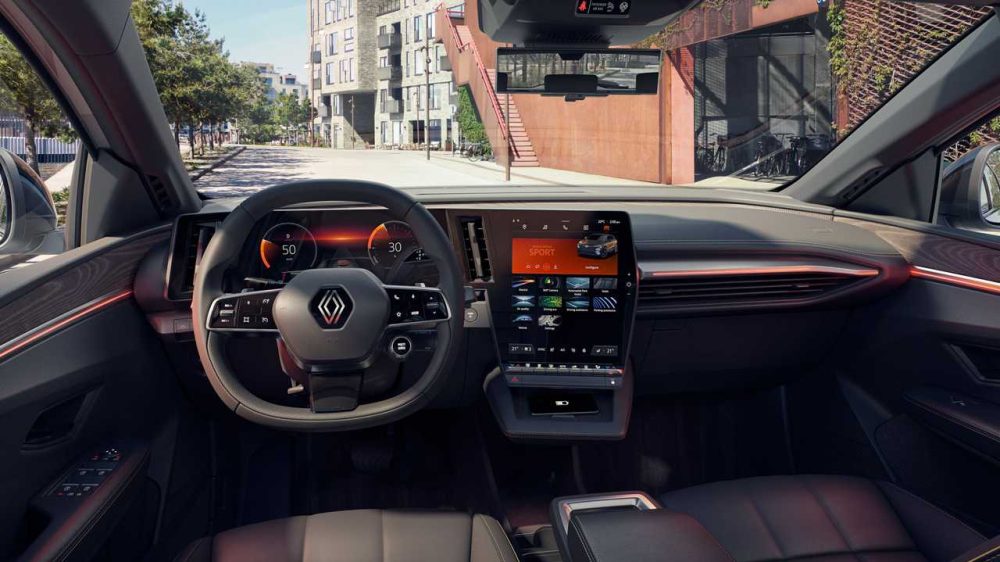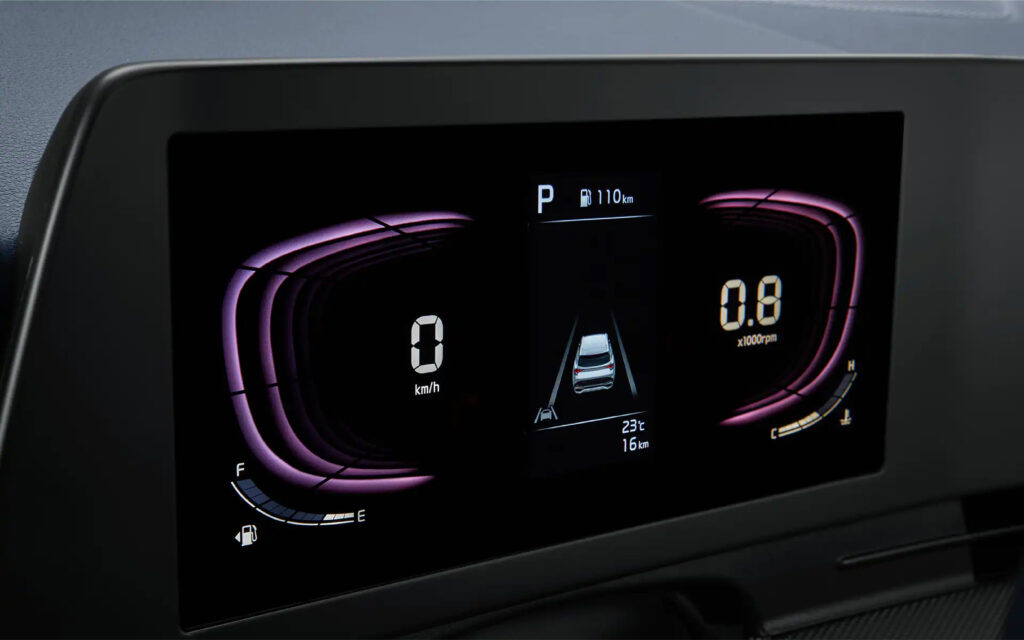Altia Accelerates EV Transition for Renault Group, Delivering Design Vision for Mégane E-Tech Electric Driver Display
The Customer
Since the company’s founding in 1899, Renault Group has been famous for defining—and redefining—automobile design. Inventor of the direct drivetrain, Renault was first to go to market with four-wheel disc brakes in 1963. As a groundbreaking Formula One owner and engineer manufacturing pioneer, the company ranks fourth on the all-time list with 160 wins. The Renault brand is also the world’s biggest seller of light vehicles thanks to their alliance with Nissan and Mitsubishi.
For the past decade, Renault Group has been fully committed to the development of large-scale electric vehicle production. Their “Renaulution” strategic plan, unveiled in January 2021, is an ambitious, value-generating corporate transformation focused, in large part, on electric and hybrid vehicles. The goal is to embody modernity and innovation in technology, energy and mobility services.
The Challenge
A critical early step in Renault’s EV transition is the debut of the Mégane E-Tech Electric, an all-electric crossover SUV that extends the company’s popular Mégane line of family automobiles. Central to the appeal of the new Mégane E-Tech Electric is its cockpit design which includes a radical L-shaped digital touch display.
The driver cluster of the Mégane is particularly noteworthy. The panel features four different interchangeable displays, selectable by the driver as needed:
- Driving layout, showing speed, range and driving mode;
- Navigation layout, providing quick reference to a destination map updated in real-time;
- Zen layout, with minimal essential readouts for simplicity;
- and Battery layout, showing the battery system loading status.
Renault Group engineers knew building this display would be a daunting undertaking. Wholly customizable, the immersive 3D display would incorporate five widgets (fuel use, tire pressure, distance, eco-monitor and music) and eight color options. It would include anti-reflective, anti-smudge aluminosilicate-based Gorilla Glass, similar to touch displays on the latest smartphones.
Most challenging of all, due to the multinational markets for the Mégane, would be the need for language support. The display would need to communicate accurately in 39 world languages, sometimes including unpredictable text strings from multimedia selections.
The Solution
For this all-important display Renault Group turned to Altia, a longtime embedded graphics development partner. Altia’s human-machine interface (HMI) development software, which includes Altia Design, a WYSIWYG graphics editor, as well as their DeepScreen automated code generator, is a production-proven software solution—driving the displays of over 100 million vehicles worldwide, including many models from Renault Group’s lineup. Moreover, Altia’s products support development of advanced 3D, multi-language and functional safety—aspects that were important for the Mégane.
Using Altia’s tools, Renault Group designers and their Tier One supplier were able to translate their HMI concepts with a high degree of accuracy and fidelity. Altia Layer Manager was used to manage the layer-based content, including 3D scenes for Advanced Driver Assistance System (ADAS) information, animated and dynamic background content, 3D car status animation, gauges, and driving-dependent information such as gear, speed and charge. Navigation maps and playback of video content were also incorporated.
Altia Binary Asset Manager, another design tool, was used to efficiently store the graphical assets on available non-volatile memory. In parallel, hardware-enabled texture compression features supported by Binary Asset Manager ensure optimized memory bandwidth. Finally, Altia Safety Monitor supervised Automotive Safety Integrity Level (ASIL) A and B functional safety-relevant driver information.
Altia’s toolchain enables automakers like Renault Group to not only leverage their original HMI models, but also scale and evolve their designs to suit various product lines and portfolios. Altia’s efficient graphics code also delivers rich graphics with the lowest memory footprint and optimized power consumption; this is invaluable for EVs, so owners can optimize their power utilization and drive as long as possible on a single charge.
The Results
Early responses to the new Renault Mégane E-Tech Electric from the automotive press were overwhelmingly positive. Many critics noted the innovation of the Mégane’s digital display; one reviewer called it “beyond a doubt Renault’s most striking breakthrough in onboard technology in the past several years.”
Mike Juran, Altia’s Chief Executive Officer, pointed to Altia’s advanced product technologies as enablers of the design. “Altia has partnered for some time with Renault Group on various vehicle cockpits—and we were very excited to collaborate with them on the Mégane E-Tech Electric,” he noted. “The Mégane E-Tech Electric is a truly global vehicle. In addition to high-impact graphics and the need for highly optimized code, the safety standards and the requirement for dynamic text in over 35 languages puts this vehicle at the forefront of the EV market.”
“We appreciate the long-term relationship with Altia, being one of the key HMI tool providers for our cluster applications,” commented Olivier DINH, Instrument Cluster Software Manager, Renault Software Factory. “Altia helped us originate our digital cluster implementations with simple digital displays—and now, together, we have arrived at this leading-edge vision of the modern electric vehicle cluster, utilizing advanced 3D technology and powerful functional safety features.”





